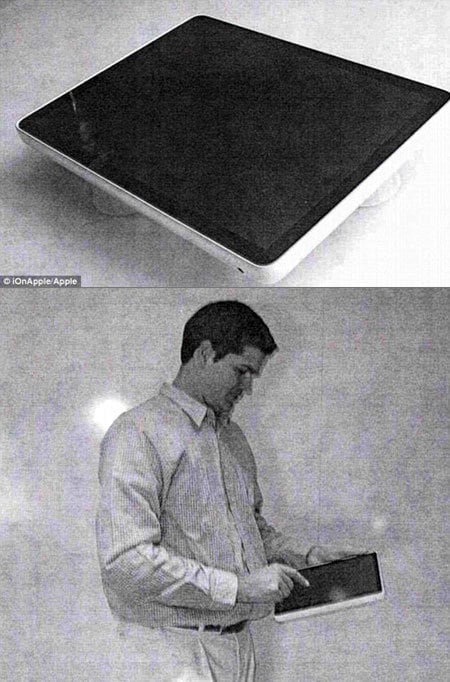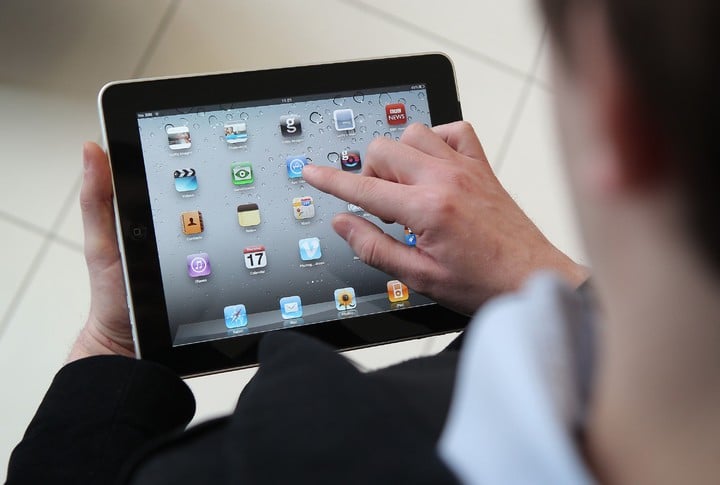In the past 10 years, more than 400 million devices have been sold, which is the achievement of Apple iPad since its birth.
It was originally a project that Apple accidentally promoted when considering low-cost netbooks. Under the influence of multi-touch technology, Jobs decided to turn the idea of tablet computers into actual products.
In order to confirm the screen size, the Apple design team at the time also produced more than 20 models with different aspect ratios, and then placed them all on the table for everyone to play with one by one to get the most realistic feedback.

Finally, the first-generation iPad chose a 9.7-inch touch screen. With the aluminum back case, it looked like a “frame.” It may not be worth mentioning today, but it also determines the basic form and development direction of iPad in the years to come, not to mention the impact and changes on the entire tablet computer market.
The end of last month also coincided with the 10th anniversary of the birth of iPad, Technology Media Input interviewed two former Apple employees < / a>, one is Apple’s former software engineering director Bethany Bongiorno, and Imran Chaudhri is the former design director of Apple’s human-computer interaction team. < / p>
Both have been deeply involved in the design and development of the first iPad, and now they have shared many behind-the-scenes development stories.
Tablets appeared in Apple’s lab earlier than iPhone
The origin of the iPad project can be traced back to before the advent of the iPhone. A few years ago, Apple has made a multi-touch interactive prototype called “Q79”, which looks similar to the iPad, but due to technical obstacles and cost reasons, Apple chose to shrink the screen and use it on mobile phones first. Only the first iPhone.
Apple also considered installing a touch screen on Mac computers, but due to the poor sales of the newly launched Power Mac G4 Cube computer, Apple began to turn to the development of small devices, and iPhone was one of them. It’s the iPad’s turn.
By 2007, low-cost netbooks began to have an impact on the personal computer market. This has also become one of the incentives for Apple to regain the tablet computer project. In addition, the success of multi-touch technology on the iPhone, The birth of the iPad is naturally on the agenda.

According to Bethany, because Apple was focusing on the development of the new iPhone at the time, it could only re-establish a team to take charge of the iPad. The new project used the codename “K48”, and “Wildcat” was the codename of the iPad software at the time.
However, entering a new product market is not easy. Many basic designs need to be developed from scratch. This is why Apple uses a large number of model machines to determine the screen size that best meets the usage habits.
But in the application scenario, some changes are not within Apple’s conjecture.
It’s not Apple’s intention to take photos with iPad, but users don’t think so
Many important basic features on the iPad were identified during early development.
For example, the multi-finger zoom gesture often used in albums, which allows you to quickly switch between the two interface components of album browsing and photo viewing, is the design proposed at the time. Bethany believes that these gestures better reflect the advantages of iPad’s multi-touch screen.

Imran mentioned the keyboard dock that was released with the original iPad. At the beginning, the development team also used the traditional computer idea to develop the iPad, so such a strange accessory appeared, although it did make the iPad look like a computer.
But to Jobs, he prefers to think of the iPad as a “digital photo frame.” If you have a stand to support your iPad and then put it in the kitchen or living room, you can make it more useful when it’s idle.
Unexpectedly, when the iPad was actually launched, it became a more personal product—the time people spend watching videos and news on the sofa while using the iPad is much longer than the time it takes as a digital photo frame. many.
To some extent, these usage habits are also in line with our current positioning of the iPad, but for Apple at the time, the tablet computer was not expected to have such a close relationship with the sofa and bed at home.

Another use case that was not thought of by Apple at the beginning of the design is related to taking pictures.
In the beginning, the Apple team did n’t believe that people would walk out the door with such a large screen, let alone shoot it, so the original iPad did not have a camera, and it changed only after the iPad 2.
Bethany Memories, she found that many people were using iPads to take pictures at the stadium of the 2012 London Olympics. The reason is not how good the iPad’s camera is, but simply because people want a larger viewfinder frame to meet their visual needs.
When Apple realized this, it decided to upgrade the iPad ’s camera specifications, but at the same time made more adequate optimizations for applications such as photo browsing.
Unfortunately, the iPad has not become a daily existence like a smart phone.
On January 27, 2010, Jobs set the stage for iPad’s debut with a consistent presentation style. Just like the release tempo of the original iPhone, it put an iPhone and a laptop on the slide with a question mark in the middle.

“Is there anything else between these two?” he asked, immediately sitting on a leather chair, taking out his iPad to start browsing the news, and completing the debut of the new device.
The time has changed. Today, the iPad no longer has the hot selling momentum of the first few years, and the annual revenue share in Apple’s financial report has also stabilized. However, this peaking trend has also caused people to question tablet computers. s future.
Imland believes that the iPad is currently experiencing growth difficulties and is still related to its product positioning. He believes that if users own both a desktop and a laptop, they will be confused about the existence of the iPad.
